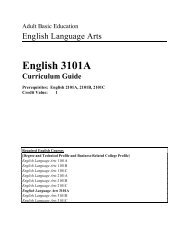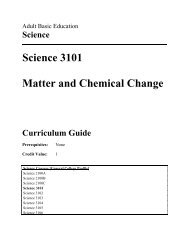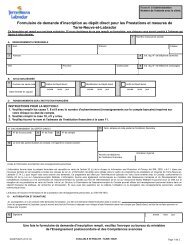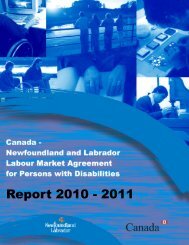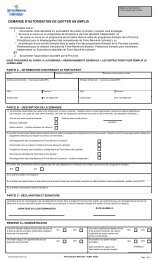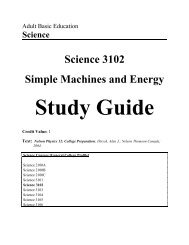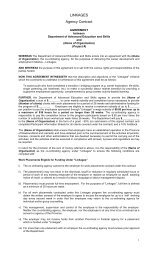A PLAN OF TRAINING FOR BRICKLAYER OCCUPATION Approved
A PLAN OF TRAINING FOR BRICKLAYER OCCUPATION Approved
A PLAN OF TRAINING FOR BRICKLAYER OCCUPATION Approved
You also want an ePaper? Increase the reach of your titles
YUMPU automatically turns print PDFs into web optimized ePapers that Google loves.
Bricklayer Occupation<br />
9. Describe types of hydraulic and pneumatic lines and fittings and explain their<br />
applications<br />
10. Describe types of tubing and flaring tools and explain the application of each<br />
11. Explain the purpose of threading taps and dies<br />
12. Describe the types of fastener tools<br />
13. Describe types and explain the uses of pullers, drivers and presses<br />
14. Describe soldering tools, materials and applications<br />
15. Describe methods of tinning and soldering<br />
16. Describe types of solders<br />
17. Describe the different types of power tools<br />
18. Describe the different types of hydraulic tools<br />
19. Describe safety requirements for using power tools<br />
20. Describe the parts of a twist drill<br />
21. Describe drill sizes and speed requirements<br />
22. Describe types and uses of reaming tools<br />
23. Explain the purpose of cutting power tools<br />
24. Describe types and explain applications of:<br />
i. portable and stationary grinders<br />
ii. grinding wheels<br />
iii. grinding discs<br />
iv. grinder dressers<br />
v. rotary wire brushes<br />
25. Describe types of compressors and components<br />
26. Describe the pliers (all types), screwdrivers (all types), wrenches (all types), clamps (all<br />
types) and vices (all types) used for fitting and assembling as per assigned information to<br />
within specifications required<br />
27. Describe as per the assigned information, rivets, keys, nuts, screws, pins, splines, studs,<br />
bolts, snaprings, bonds (thread locking compounds), washers, lock wires and self-locking<br />
nuts<br />
MAJOR TASKS / SUBTASKS (SKILLS):<br />
1. Practice safety<br />
a. Interpret occupational safety code<br />
b. Apply safe work habits at all times<br />
c. Use and maintain personal safety equipment<br />
d. Implement exhaust control procedures<br />
e. Use fire fighting equipment<br />
f. Respect noise level regulations<br />
g. Reduce factors that contribute to spontaneous combustion<br />
h. Identify potential hazards to personal safety<br />
i. Check for unsafe conditions<br />
j. Report accident<br />
Provincial Apprenticeship Board - June, 2000 Page 13




